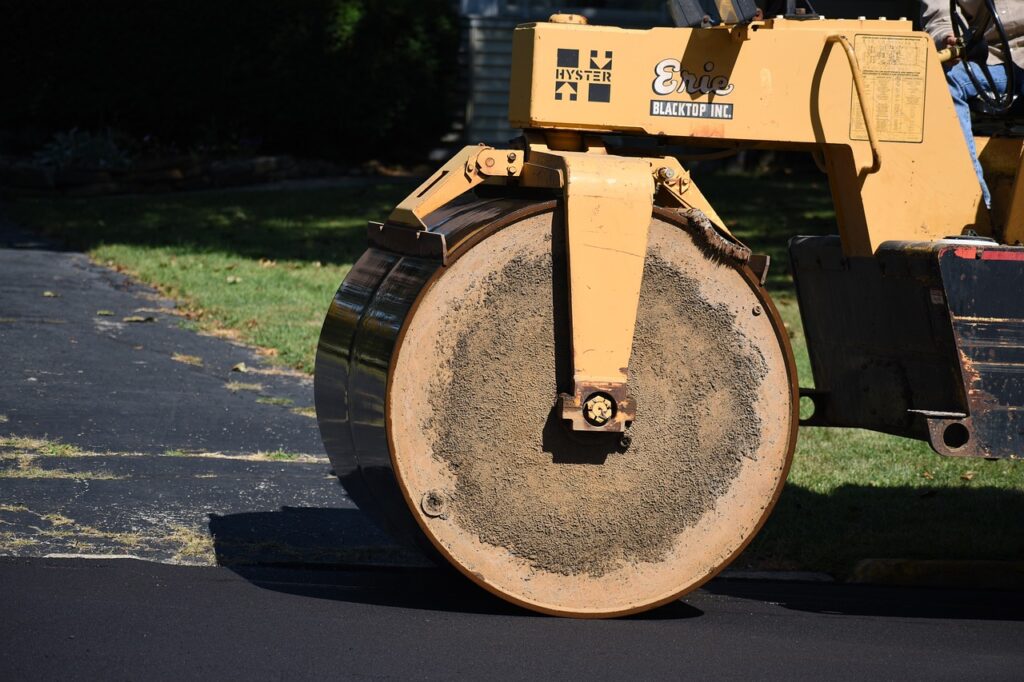The Smooth Road Ahead: Exploring the Art and Science of Asphalt Paving
by siteadmin

Asphalt paving is a ubiquitous feature of modern infrastructure, lining our roads, highways, parking lots, and driveways. It’s easy to take these smooth surfaces for granted, but behind their seemingly effortless appearance lies a complex blend of art and science. In this blog post, we’ll delve into the world of asphalt paving, exploring its history, the materials involved, the process of laying asphalt, and its importance in shaping our modern world.
A Brief History:
The use of asphalt dates back thousands of years, with ancient civilizations like the Babylonians and Egyptians using natural asphalt deposits for waterproofing and construction purposes. However, it wasn’t until the 19th century that asphalt began to be used extensively for paving roads. The pioneering work of individuals like John Metcalf and Thomas Telford laid the foundation for modern road construction techniques, and the invention of the asphalt mixer by Edmund J. DeSmedt in 1870 revolutionized the paving industry.
Materials:
Modern asphalt is a carefully engineered blend of aggregates, binders, and additives. Aggregates, such as crushed stone, gravel, and sand, provide strength and stability to the pavement. The binder, typically bitumen, holds the aggregates together and provides flexibility. Additives may be included to enhance properties like durability, resistance to rutting and cracking, and environmental sustainability.
The Paving Process:
Asphalt paving is a multi-step process that requires precision and expertise. Here’s a simplified overview of the typical steps involved:
- Site Preparation: The area to be paved is cleared of debris and graded to ensure proper drainage.
- Base Installation: A sturdy base layer, often consisting of crushed stone or gravel, is laid and compacted to provide a stable foundation for the asphalt.
- Asphalt Mix Preparation: The asphalt mix is prepared in an asphalt plant, where aggregates and binders are heated and mixed to the desired specifications.
- Paving: The hot asphalt mix is transported to the paving site and spread evenly using specialized equipment. It is then compacted to achieve the desired density and smoothness.
- Finishing Touches: Once the asphalt has cooled and hardened, any necessary markings, such as lane lines and symbols, are applied.
Importance:
Asphalt paving plays a crucial role in facilitating transportation, commerce, and everyday life. Smooth and well-maintained roads improve safety, reduce vehicle wear and tear, and enhance fuel efficiency. Additionally, asphalt is recyclable and can be reused, making it an environmentally sustainable choice for paving projects.
From ancient civilizations to modern societies, asphalt paving has been instrumental in connecting people and enabling progress. Its durability, versatility, and cost-effectiveness make it the material of choice for paving projects around the world. As we continue to innovate and refine our techniques, the future of asphalt paving looks brighter than ever, promising smoother roads ahead for generations to come.
Asphalt paving is a ubiquitous feature of modern infrastructure, lining our roads, highways, parking lots, and driveways. It’s easy to take these smooth surfaces for granted, but behind their seemingly effortless appearance lies a complex blend of art and science. In this blog post, we’ll delve into the world of asphalt paving, exploring its history,…
Recent Posts
- Balancing Act: Environmental Impact and Sustainability in Asphalt Paving
- Smooth Moves: Asphalt Paving Maintenance Strategies for Sustaining Smoothness
- Innovating Asphalt Paving: Exploring Advanced Asphalt Mix Design Methodologies
- The Importance of Pothole Repair: Health Impacts of Pothole-Related Accidents
- Understanding Chemical Exposure and Its Impact on Asphalt Degradation
